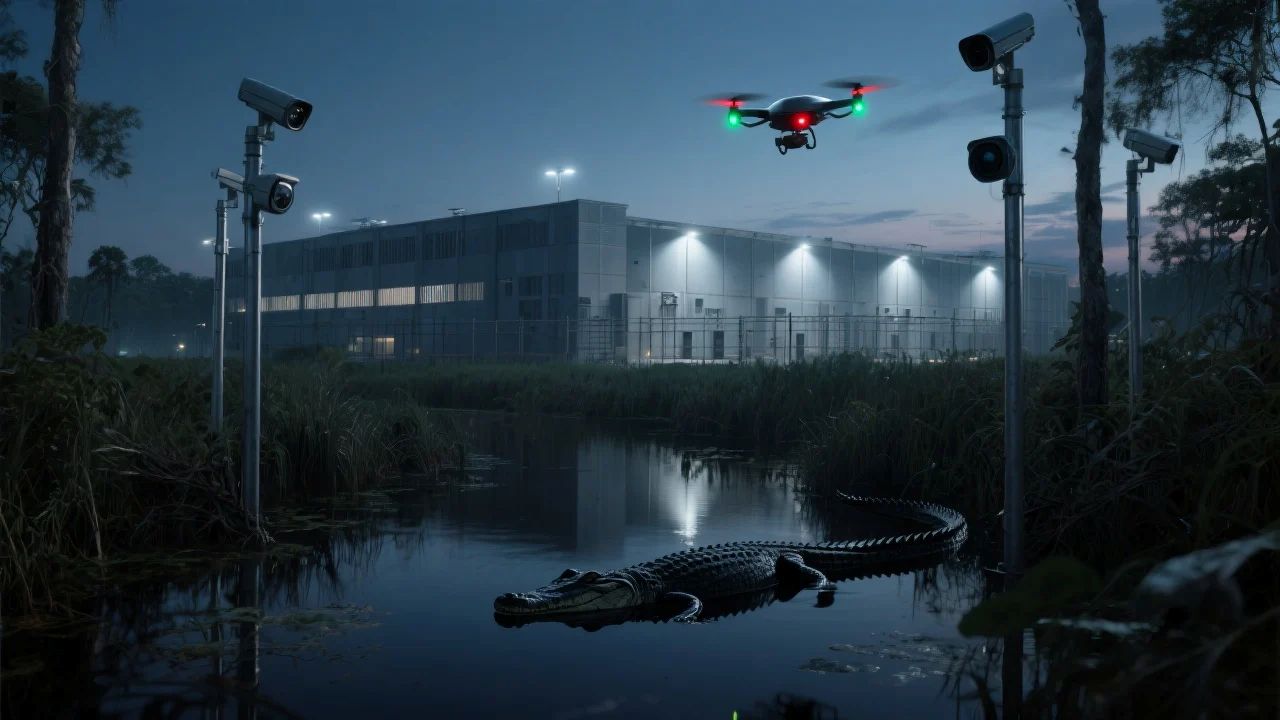
There’s a stretch of Florida marshland, not far from the hum of Miami’s highways, where the air is thick with humidity and the only thing more abundant than mosquitoes are the alligators.
But lately, the real predators aren’t the ones with scales and teeth. They’re the ones with badges, drones, and a mandate to surveil. Welcome to what locals are calling “Alligator Alcatraz”—a nickname that started as a joke but now feels like a warning.
This isn’t just about a new detention center or a high-tech jail. It’s about the architecture of a new kind of police state, one that’s being built in plain sight, brick by digital brick, in the name of public safety. The story of Alligator Alcatraz is a microcosm of a national trend: the fusion of old-school incarceration with next-generation surveillance, all set against the backdrop of America’s most mythic wilderness.
From Swamp to Surveillance State
The facility itself is a marvel of contradictions. On one side, you have the natural moat of the Everglades, teeming with wildlife and the ghosts of bootleggers past. On the other, you have a perimeter lined with motion sensors, facial recognition cameras, and a drone fleet that would make a Silicon Valley startup jealous. The message is clear: escape is not an option, and privacy is a relic.
Local officials tout the project as a necessary evolution. “We’re not just building a jail,” one county commissioner told me, “we’re building a deterrent.” But deterrence, in this context, means more than razor wire. It means predictive policing algorithms that flag “suspicious” behavior before a crime is committed. It means biometric checkpoints for visitors and staff alike. It means a digital panopticon, where the walls are invisible but the gaze is constant.
The Human Cost of High-Tech Confinement
For the people who live nearby, the transformation has been jarring. One longtime resident, a retired park ranger named Luis, remembers when the only thing you had to worry about was a gator in your backyard. Now, he says, “I feel like I’m the one being watched.” His unease is echoed by civil liberties groups, who warn that the technologies piloted here rarely stay contained. What starts in the swamp often seeps into the city.
There’s a certain irony in the location. The Everglades have always been a place of escape—runaway slaves, outlaws, and misfits all found refuge in its tangled heart. Now, the same landscape is being weaponized to keep people in, not let them out. The symbolism isn’t lost on anyone paying attention.
The National Blueprint
Alligator Alcatraz isn’t an isolated experiment. Across the country, law enforcement agencies are blending traditional incarceration with digital surveillance, creating hybrid spaces that are part prison, part laboratory. The logic is seductive: more data, more control, fewer escapes. But the trade-offs are profound. What happens when the tools designed to keep us safe become the very things that erode our freedom?
In interviews with local officials, tech vendors, and residents, a pattern emerges. The language of safety is always paired with the language of inevitability. “This is the future,” one sheriff told me, “and you can’t fight the future.” But history suggests otherwise. Every fortress, no matter how impregnable, eventually faces its reckoning.
What We Lose When We Build Walls
The story of Alligator Alcatraz is about more than a single facility. It’s about the choices we make when fear and technology intersect. It’s about the slow, almost imperceptible shift from open society to closed circuit. And it’s about the people—on both sides of the wall—who have to live with the consequences.
As the sun sets over the marsh, the cameras switch to night vision, and the drones begin their silent patrol. The alligators, indifferent as ever, slip beneath the surface. But above the waterline, a new kind of predator is on the prowl, and its appetite is for something far more precious than flesh.
